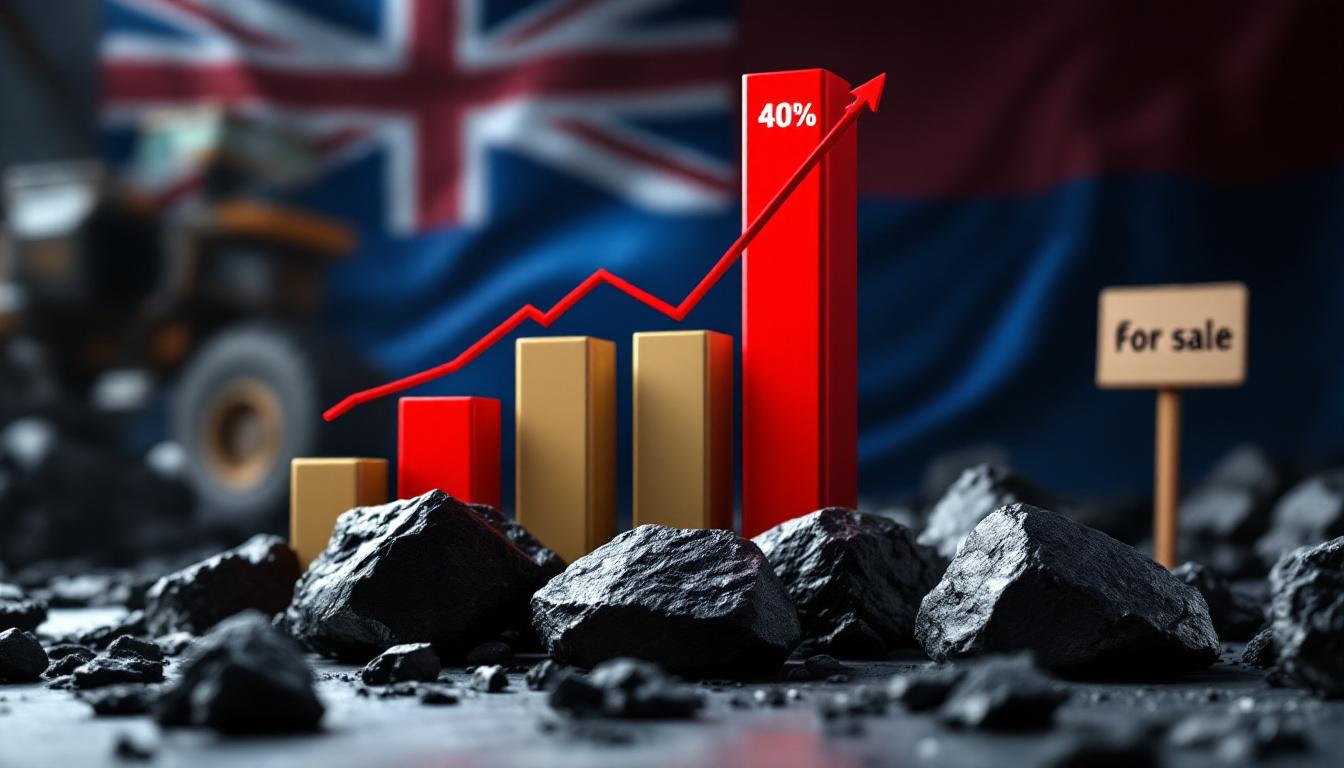What's Causing the Surge in NdFeB Scrap Procurement?
The rare earth recycling market is experiencing unprecedented growth in 2025, driven by a perfect storm of supply constraints and price incentives. This surge in NdFeB scrap procurement reflects broader trends in the rare earth supply chain and highlights the growing importance of recycling in meeting global demand for these critical materials.
Record-High Pricing for Recycled Rare Earth Materials
The market for recycled rare earth materials has reached remarkable heights in mid-2025. According to Shanghai Metal Market (SMM) data from July 2025, the average price of praseodymium-neodymium (Pr-Nd) recycled from NdFeB scrap has climbed to 485.5 yuan/kg—representing the highest level observed in the past 12 months.
Even at its lowest point in June 2025, prices remained exceptionally strong at 480 yuan/kg, demonstrating remarkable resilience throughout the second quarter. This price stability has created ideal conditions for recycling operations to expand their procurement activities.
"The prices of Pr-Nd scrap remained high, mainly influenced by the overall stable prices of Pr-Nd oxide in June," reports SMM in their July 4, 2025 market analysis.
This price trajectory isn't merely a short-term spike but represents a sustained upward trend throughout Q2 2025, with market indicators suggesting continued strength in coming months.
Supply Chain Dynamics Supporting High Prices
The elevated pricing environment for recycled rare earth materials can be traced to multiple pressure points across the supply chain:
Mining sector constraints:
- Persistent shortage of low-priced rare earth ore from primary mining operations
- Production bottlenecks at key extraction sites
- Increased scrutiny of environmental practices limiting new mine development
- Geopolitical factors affecting traditional supply regions
These mining-sector challenges have created a ripple effect throughout the supply chain. Separation plants—facilities that process rare earth concentrates into individual elements—are experiencing significantly increased procurement difficulties. The resulting rise in raw material costs has provided strong support for Pr-Nd oxide pricing.
The cause-and-effect relationship is clear: mining constraints lead to separation plant challenges, which drive up oxide prices, ultimately supporting recycled material values. This dynamic has created a rare period where recycled materials command premium pricing comparable to virgin materials.
Price support factors:
- Stable oxide prices throughout June 2025 (directly influencing scrap values)
- Supply chain disruptions limiting traditional ore sources
- Raw material cost increases affecting overall market pricing
- Processing capacity limitations at separation facilities
Industry analysts note that this market environment differs significantly from historical patterns, where recycled materials typically traded at substantial discounts to virgin materials. The current pricing parity reflects both supply constraints and growing recognition of recycled materials' quality.
How Are Recycling Operations Responding to Market Conditions?
The recycling sector's response to these favorable market conditions has been swift and substantial, with operations expanding significantly to capitalize on high prices.
Increased Operational Activity
According to SMM data, June 2025 saw a substantial month-over-month increase in NdFeB scrap procurement volumes. While precise percentage increases weren't quantified, market observers characterize the growth as "significant" and "noticeable" compared to previous months.
"Stimulated by these high prices, suppliers' willingness to sell increased significantly, leading to a noticeable increase in the procurement volume of scrap by recycling enterprises and a rise in their operating rates," notes the SMM analysis.
This market dynamic creates a virtuous cycle for recycling operations:
- High prices incentivize scrap suppliers to sell material
- Increased material availability enables recyclers to procure larger volumes
- Greater input volumes allow recycling enterprises to raise operational rates
- Higher operational rates result in increased production of recovered oxides
- More recovered material enters the supply chain, helping to address demand
For recycling enterprises, the current market environment presents a rare opportunity to maximize revenue while operating at higher capacity utilization rates than typical historical levels.
Production Capacity Utilization
Perhaps most notably, the sustained high price environment has catalyzed a revival of previously dormant capacity. Several scrap enterprises that had suspended operations during periods of lower pricing have now resumed production, further boosting the sector's overall output.
The recycling sector's response includes:
- Previously idle facilities restarting operations
- Existing facilities increasing throughput to maximize revenue
- Procurement teams expanding collection networks
- Operating rate increases correlating directly with price stability
- Production of recovered oxides showing corresponding growth
Industry analysts project this procurement volume growth trend will continue in coming months, particularly if current price levels hold. The reactivation of idle capacity is especially significant, as it indicates confidence in the medium-term outlook for recycled material prices.
For recycling facilities, which typically face high fixed costs regardless of operational rate, the ability to run at higher capacity utilization significantly improves profitability metrics. The current market environment thus represents an unusually favorable period for the recycling sector's economics.
What's Happening with Downstream Demand?
While upstream recycling operations are experiencing a boom, the demand picture from downstream magnetic material manufacturers presents a more nuanced situation. Understanding these dynamics is crucial for forecasting how the current market conditions might evolve.
Current Market Conditions
Despite the vibrant recycling sector, downstream demand has shown more restrained growth patterns. According to SMM analysis, downstream magnetic material enterprises reported only limited order improvement in June 2025, with seasonal factors continuing to exert influence on overall demand patterns.
"Orders from downstream magnetic material enterprises did not improve significantly in June, and demand was still affected by the off-season," reports SMM.
This seasonal weakness is characteristic of the rare earth market's cyclical nature, with demand typically following predictable patterns tied to manufacturing schedules in key end-use sectors. Currently, the rare earth market is characterized by what analysts describe as "weak supply-demand fundamentals."
However, there are early signals of potential demand improvement on the horizon. Export control approval processes—which have been a significant bottleneck for international sales—have begun to accelerate. This regulatory easing could facilitate increased international trade in rare earth materials, potentially expanding market opportunities for both primary and recycled materials.
Key downstream market indicators:
- Limited order improvement from magnetic material producers (June 2025)
- Seasonal factors dampening overall demand
- Weak supply-demand fundamentals characterizing the broader market
- Export control approvals beginning to accelerate
These conditions create an interesting market dynamic where recycling volumes are increasing despite relatively flat downstream demand—potentially creating inventory buildups if demand doesn't accelerate as anticipated.
Future Outlook Projections
Despite current demand constraints, the outlook for coming months appears more positive. Industry analysts project that end-use demand will gradually rebound as seasonal factors shift and export conditions improve.
"As end-use demand gradually rebounds and export control approvals accelerate, the operating rates of downstream magnetic material enterprises are expected to increase," notes the SMM analysis.
This projected demand recovery is central to maintaining the current favorable economics for recycling operations. Most market participants have expressed optimism about future rare earth price trends, contributing to the decision by some scrap enterprises to resume production despite current demand limitations.
The long-term forecast indicates continued growth in scrap procurement volumes, suggesting confidence in the sustainability of current market conditions. This optimism appears based on several factors:
- Anticipated gradual rebound in end-use demand
- Accelerating export control approvals easing international sales
- Projected increases in operating rates at downstream manufacturers
- General market optimism about future rare earth price trajectories
While these projections support continued strength in the recycling sector, the timing and magnitude of demand recovery remain key variables that could affect market balance in coming months.
What Are the Market Implications for Rare Earth Recycling?
The current market dynamics carry significant implications for the rare earth recycling industry, affecting both economic considerations and sustainability objectives. These implications extend beyond immediate pricing to influence investment decisions, infrastructure development, and resource conservation strategies.
Economic Benefits of Recycling
The sustained high prices for NdFeB scrap have fundamentally altered the economics of rare earth recycling. With Pr-Nd from recycled sources commanding 485.5 yuan/kg as of July 2025, recycling operations have become increasingly profitable compared to historical averages.
This economic transformation has created several notable impacts:
- Enhanced collection incentives: Higher scrap values motivate more comprehensive collection systems
- Improved processing economics: Recycling facilities can justify more sophisticated separation technologies
- Reduced virgin-recycled price gap: The differential between primary and secondary materials has narrowed
- Investment attraction: Capital flows toward recycling infrastructure have increased
- Cost-benefit improvements: Recycling has become more economically viable compared to primary mining
The financial case for recycling has particularly strengthened in regions with established collection infrastructure and processing capabilities. Urban mining—recovering materials from end-of-life products—has become increasingly competitive with traditional mining industry evolution as price disparities narrow.
For recycling enterprises, the current market environment presents opportunities to invest in capacity expansion and technological improvements with greater confidence in future returns. This could accelerate the development of more efficient recovery processes and expansion of recycling infrastructure.
Sustainability Considerations
Beyond economic factors, the increased recycling rates driven by high prices deliver substantial sustainability benefits. Recycling rare earth elements typically requires significantly less energy than primary production and generates fewer environmental impacts.
Key sustainability advantages include:
- Reduced mining impacts: Less reliance on environmentally disruptive extraction operations
- Lower energy consumption: Secondary production typically requires 75-90% less energy than primary production
- Decreased waste generation: Fewer tailings and processing residues compared to mining
- Water conservation: Recycling processes generally consume less water than mining operations
- Carbon footprint reduction: Lower greenhouse gas emissions across the production lifecycle
These environmental benefits align recycling with circular economy principles, which are gaining prominence in rare earth supply chain planning. As sustainability considerations become more central to industrial strategy, the value proposition for recycling extends beyond purely economic factors to include environmental performance metrics.
The current market conditions thus create a rare alignment between economic incentives and sustainability objectives—the scrap price remains high while simultaneously delivering environmental benefits through increased recovery rates and battery recycling process improvements.
FAQ About NdFeB Scrap Recycling
What factors influence NdFeB scrap prices?
NdFeB scrap prices are determined by a complex interplay of market forces, with several key factors exerting particular influence:
- Pr-Nd oxide market prices: The pricing of virgin rare earth oxides sets reference points for recycled materials
- Mining supply constraints: Limitations in primary production (like the current tight supply of low-priced ore) directly impact recycled material values
- Downstream demand: Orders from magnetic material manufacturers influence overall market balance
- Export control policies: Regulatory approvals and restrictions affect international trade volumes
- Seasonal demand fluctuations: Predictable cycles in end-use markets create demand variability
- Recycling capacity utilization: Available processing capacity affects competition for scrap materials
- Material quality differentials: Composition and contaminant levels in scrap affect recoverable value
- Energy and processing costs: Operational expenses influence minimum economically viable prices
The current high-price environment reflects particular pressure on mining supply combined with stable downstream demand, creating favorable conditions for recycling operations.
How does scrap recycling compare to primary rare earth mining?
Recycling and primary mining represent complementary approaches to rare earth production, each with distinct characteristics:
Environmental impact comparison:
- Recycling typically produces 65-80% fewer carbon emissions than primary mining
- Primary mining generates significantly more waste material per ton of rare earths produced
- Water usage for recycling is typically 40-60% lower than equivalent primary production
- Land disturbance is minimal for recycling compared to extensive footprint of mining operations
Economic efficiency factors:
- Mining economics depend heavily on ore grades and by-product recovery
- Recycling economics are influenced by collection costs and processing efficiency
- At current price levels, recycling can achieve comparable or better margins than mining
- Capital intensity is generally lower for recycling operations than new mine development
Supply limitations:
- Recycling volumes are constrained by available scrap material and collection rates
- Primary mining faces resource depletion, permitting challenges, and environmental restrictions
- Recycling capacity can typically scale more quickly than new mining operations
- Combined approach provides greatest supply chain resilience
While primary mining remains essential for meeting total demand, recycling provides an increasingly important complement that reduces environmental impact while enhancing supply security through renewable energy solutions.
What are the main applications for recycled rare earth materials?
Recycled rare earth materials flow into the same applications as virgin materials, with some variations based on purity levels and composition. The primary uses include:
- Electric vehicle motors: High-performance NdFeB magnets for traction motors
- Wind turbine generators: Direct-drive systems utilizing permanent magnets
- Consumer electronics: Speakers, vibration motors, and actuators in smartphones and devices
- Industrial motors and generators: Energy-efficient designs for manufacturing and power generation
- Automotive sensors and micromotors: Various vehicle systems requiring compact magnetic components
- Medical equipment: MRI machines and precision instruments
- Robotics and automation: Positioning systems and actuators
- Defense applications: Guidance systems and communications equipment
High-purity recycled materials can typically meet specifications for all these applications, particularly when recovery processes achieve separation at the individual element level. Some manufacturers now specifically request recycled content to meet sustainability objectives, creating premium markets for certified recycled materials.
How might rare earth recycling trends evolve in the coming years?
The rare earth recycling landscape is poised for significant evolution, driven by both market forces and technological advancements:
- Expanded collection infrastructure: More comprehensive systems for capturing end-of-life products
- Technological improvements: Advanced separation processes increasing recovery rates and material purity
- Policy support: Growing regulatory frameworks promoting circular economy principles
- Investment growth: Increased capital flowing to recycling ventures as economics improve
- Integration with manufacturing: Closed-loop systems where manufacturers directly recycle their products
- Recovery rate improvements: Higher efficiency processes reducing material losses
- Diversification of input streams: Beyond magnets to other rare earth applications
- Geographic expansion: Growth of recycling capacity beyond current concentration in China
As sustainability concerns grow and critical raw materials transition becomes more important, rare earth recycling is expected to expand significantly. The SMM analysis indicates "the procurement volume of scrap by recycling enterprises is expected to continue increasing" in the long term, reflecting broad industry confidence in recycling's growing role.
These trends suggest recycling will become an increasingly significant component of the rare earth supply picture, potentially providing 25-30% of total rare earth materials by 2030 according to industry projections. Furthermore, emerging mine reclamation innovation will complement recycling efforts to create a more sustainable overall supply chain.
Want to Invest in the Next Major Mineral Discovery?
Discovery Alert's proprietary Discovery IQ model instantly notifies investors about significant ASX mineral discoveries, turning complex mineral data into actionable insights. Understand why historic discoveries can generate substantial returns by visiting Discovery Alert's dedicated discoveries page and begin your 30-day free trial today to position yourself ahead of the market.




